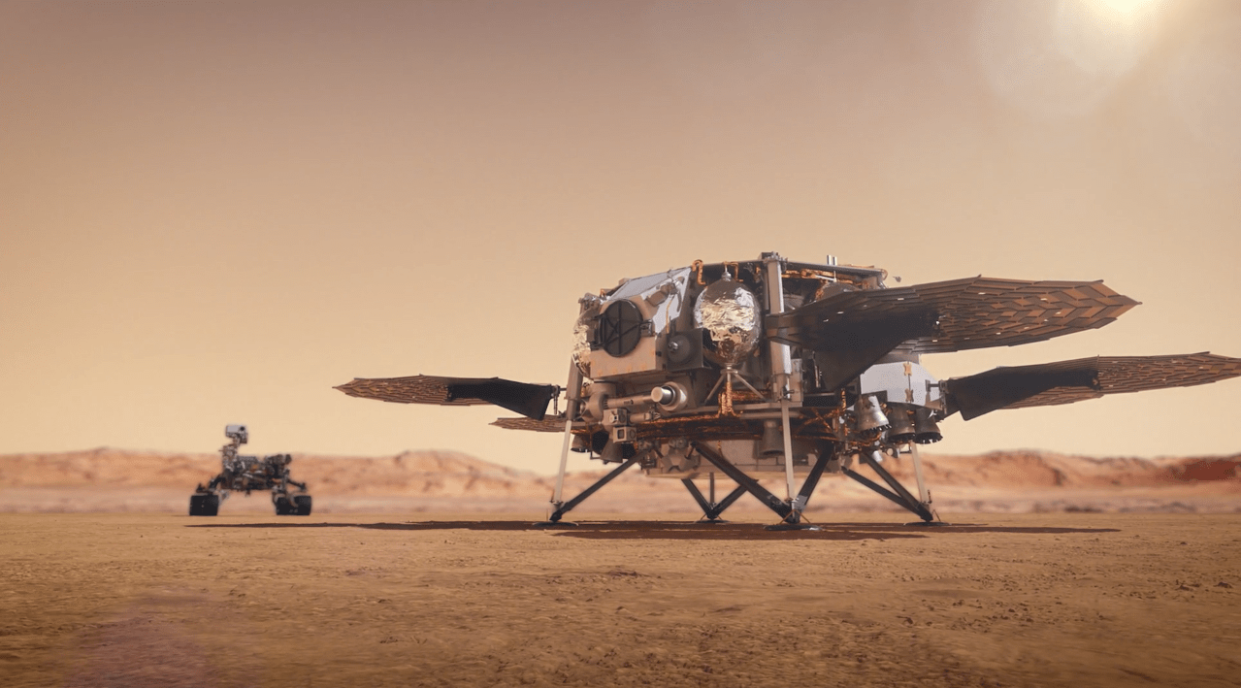NASA puts $10M down on Mars sample return proposals from Blue Origin, SpaceX and others

It turns out the space industry has a lot of ideas on how to improve NASA’s $11 billion, 15-year plan to collect and return samples from Mars. Seven of these proposals have caught the agency’s attention.
Announced today, NASA has awarded $1.5 million contracts to seven companies to further develop their plans for the revamped Mars Sample Return mission. The awardees, and the title of their proposals, are as follows:
Lockheed Martin: “Lockheed Martin Rapid Mission Design Studies for Mars Sample Return”
SpaceX: “Enabling Mars Sample Return With Starship”
Aerojet Rocketdyne: “A High-Performance Liquid Mars Ascent Vehicle, Using Highly Reliable and Mature Propulsion Technologies, to Improve Program Affordability and Schedule”
Blue Origin: “Leveraging Artemis for Mars Sample Return”
Quantum Space: “Quantum Anchor Leg Mars Sample Return Study”
Northrop Grumman: “High TRL MAV Propulsion Trades and Concept Design for MSR Rapid Mission Design”
Whittinghill Aerospace: “A Rapid Design Study for the MSR Single Stage Mars Ascent Vehicle”
A total of 10 studies — including two NASA centers and the agency’s Jet Propulsion Laboratory and Applied Physics Laboratory — were selected to produce studies. These were selected after the agency put out a request for proposals in April.
The titles don’t really say very much at all about the respective proposals — for example, it’s no surprise that SpaceX is offering up Starship for a mission to Mars, but how exactly the vehicle will be enabled to collect and return samples is still unclear. That’s the whole point of the study period: to help NASA understand whether there are viable alternative mission designs or mission elements to bring Martian samples home safely.
According to the request for proposal, studies could be for complete overhauls of the mission design, or for designs that include elements of NASA’s MSR mission or NASA’s Artemis program.
NASA turned to private industry after finally admitting that its architecture for MSR is incredibly complicated. In fact, it’s a bit of a misnomer to even call it a single mission, given that the plan involved the Perseverance rover, a novel sample retrieval lander, a rocket called a Mars Ascent Vehicle, and an Earth return orbiter. These vehicles would need to work in perfect synchronicity to collect and transport the samples.
Last year, an independent review board recommended that NASA revisit the mission design given the concerns about the technical features and the high costs. So the agency is doing just that: In documents related to the RFP, NASA said it's looking for a less complex mission design and one that would reduce the total costs to the agency. The agency also said it was looking for the earliest possible return date.
Companies will start work in July and complete their studies in October.


